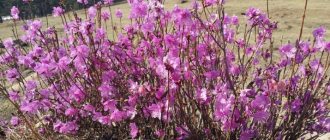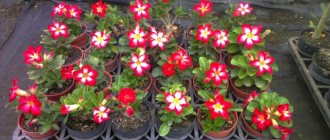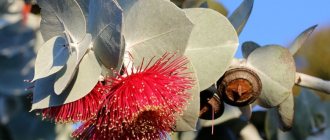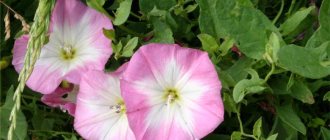Types and varieties of plants, appearance
The forget-me-not flower, the photo of which you will find below, looks perfect, which allows you to add it to a bouquet for any occasion. At the same time, not everyone knows that these beautiful flowers, which can be grown in your flowerbed and then placed in a vase, have many varieties. That is, when planting your home front gardens, you will come across the following varieties of popular flowers:
- Alpine. This is far from a garden forget-me-not. To grow such a flower at home, you will need special care and planting. Basically, the blue and dark Alpine forget-me-not is found in the Carpathians, the Caucasus and, accordingly, in the Alps. Such flowers bloom for a very long time, about 7 weeks, and at the same time they love sunlight very much.
- Lesnaya. Blue perennial forget-me-not, which has light fluffy buds. The plant reaches a height of 30 cm. It usually grows in fields, in the Carpathians and Europe. Its leaves are elongated and oval in shape with a soft green color.
- Bolotnaya. A perennial plant with branched stems up to 8 cm long. It blooms with pink and blue buds, and usually grows in Siberia, Mongolia, Transcaucasia, the Balkans and Central Europe.
- Forget-me-not field. These are field plants with low shoots and small flowers. It begins to bloom in May and blooms until late autumn. Typically grows in Asia, North Africa, Siberia and the Canary Islands.
- Forget-me-not Chekanovsky. This plant is listed in the Red Book on the territory of the Russian Federation. Today it can only be found in the Olenek-Lena interfluve, as well as on the left bank of the Talagan River.
- Resteiner's forget-me-not. Creeping forget-me-not, which when flowering forms a soft blue carpet. It is a perennial plant that does not require care.
Description of the plant and species
The typical species of the genus Forget-me-not is the forget-me-not. This is a short, up to 30 cm, perennial with a tetrahedral stem, rare for the borage family. The dense scaly leaves give them a grayish color and some resemblance to mouse ears, which is reflected in the Latin name of the genus - Myosotis. This plant is popularly known as cattail, thornweed or feverweed.
Its flowers, the diameter of a ruble coin, form an original inflorescence - a whorl: one shoot from each axis, located on one side only. The flat, symmetrical flower of the round forget-me-not has five wide blue petals with yellow scales covering the grass. It is so harmonious and unobtrusive that it became the heraldic flower of Henry IV of Lancaster and the Swedish province of Dalslaid.
Of the 61 types of forget-me-nots, the most common are the following:
- Highlands - drought-resistant, loves rocky outcrops, crevices between stones on sunny slopes;
- Swamp (scorpion) - prefers swamps, ponds and ditches;
- Forest - grows on the edges of mixed forests.
Most species bloom profusely and for a long time in May-June, and bear fruit in August.
Where and how does it grow
When examining in detail the forget-me-not flower, photos of which will be presented below, note for yourself the fact that under natural conditions an ordinary wildflower grows almost throughout Europe, Asia, Siberia, the Canary Islands and North Africa. Only some types of flowers have their own habitat for development.
The preferred terrain for forget-me-nots are meadows, fields, dry slopes and wet forests. Often representatives of the subspecies can be found along the roadsides.
Application in landscape design
Forget-me-not is a very popular flower in ornamental gardening due to its unpretentiousness and delicate beauty. Used as a border for multi-tiered flower beds, flower beds and garden paths. Stem forget-me-not is an almost irreplaceable attribute of rural and romantic landscapes. Planted downhill from the neck of a pulled-up pitcher, the blue ripple of this groundcover imitates the water of a stream. Forget-me-not marsh creates touching compositions along the banks of artificial ponds.
The garden form of this plant has larger inflorescences in rich blue and other shades and a long flowering period. The only drawback of this plant is its fragility: in cultivation it is grown as a biennial plant.
When choosing a garden variety, we usually think about the color of the petals. In the case of hybrid forget-me-nots, they can range from white to cream to pink. An interesting one is Woodland Glade, which is a nice mix of colors ranging from ivory and pearl to smoky pink and sky blue.
Benefit
When looking at forget-me-not flowers, photos of which are presented in high resolution below, be sure to pay attention to their beneficial properties. With proper preparation of decoctions and rubs, forget-me-not will help you:
- cope with inflammation;
- stop the bleeding;
- cause expectorant action;
- reduce sweating;
- neutralize itching;
- remove swelling;
- cure skin rashes and eczema;
- remove the tumor.
Habitat
The fifty species that are included in the genus can be found in New Zealand, the USA, South Africa, in humid places in Asia and Europe, as well as Australia. In Russia, this plant can be found in many gardens, and in Germany, France, Great Britain and Sweden, forget-me-not is often the highlight of spring flower beds. Forget-me-not grows in Dagestan, Ciscaucasia and Siberia. Typically, this flower chooses damp forests, fields, swampy meadows, roadsides and river banks. That is, places where it is quite humid.
Application
When looking at a photo of a forget-me-not, note for yourself the fact that the plant has several variations of use. Next, we invite you to familiarize yourself with some of the most popular ways to use flowers in everyday life.
In medicine
Forget-me-not is not officially used in any medical preparation, but it has found more than widespread use in folk formulations. With its help, you can cope with a large number of skin diseases, as well as prevent blood loss from a deep wound.
In beekeeping
Field forget-me-not is an excellent perganos and honey plant. Often this is what beekeepers plant near their hives.
In aromatherapy
Forget-me-not oil is produced, which contains a large amount of potassium. This oil is subsequently prescribed for use by people with potassium deficiency. The oil helps combat the effects of paralysis, hypotension and asthenia.
Chemical composition and application
Nesmals are not included in the State Pharmacopoeia of the Russian Federation, are not used in official medicine, and their chemical composition has been poorly studied. It is known that the grass contains up to 6% tannins, which suppress the development of pathogenic microflora. In addition, anthocyanins, saponins, flavonoids, linoleic acid, a sufficient amount of potassium and other trace elements accumulate in the leaves.
Calendula is used in folk medicine. Decoctions of the plant are used to wash the eyes for conjunctivitis, allergic reactions, and inflammation of the lacrimal glands. They are also used to make lotions and baths for dry eczema and skin rashes of various etiologies.
The name “fever herb” justifies the use of its infusions and decoctions for painful coughs, tuberculosis, colds with profuse night sweats. According to some reports, herbal remedies help with snake and scorpion bites, as well as in the treatment of certain types of malignant tumors.
Forget-me-not is an ingredient in homeopathic remedies for the treatment of gastrointestinal disorders and fatigue.
Forget-me-not is used in folk medicine
How to grow, care and pests and diseases
To grow useful forget-me-nots on your property, use the simple recommendations presented below:
- Plant flower seeds in open ground. The ideal time for planting is July.
- Be sure to fertilize and moisten the soil before planting. It is advisable to loosen it and dig it up.
- Sprinkle the seeds planted in the ground with a small amount of sand.
- Be sure to use covering material. This way the flowers will take root better.
- Provide enough shade for the flowers.
- Create moist meadow soil.
- Water the plant once every three weeks.
- Fertilize the soil once a month after planting.
My inspiration is forget-me-not
Good day, dear needlewomen!
I’m sorting through the rubble of decoupage cards, I came across images of old postcards, and that’s it – with forget-me-nots!
Beautiful, of course, but why are there so many forget-me-nots? Both in New Year and Christmas cards?
And as always, my insatiable curiosity led me to the World Wide Web :))
The first thing that came up in the search was Forget-me-not field - this is an annual or biennial plant belonging to the Borage family. In my opinion, it is interesting only to botany lovers.
But the very name forget-me-not says a lot. It’s not without reason that forget-me-not is considered a witch’s herb. For example, a wreath of forget-me-nots, placed around the neck of a loved one or placed on his chest on the left side (where the heart beats) bewitches him and holds him close more tightly than any chains. The roots of the plant have the same power.
In Germany, it is believed that the forget-me-not is the flower with which you can find out the name of your future spouse. To do this, they pick off the first forget-me-not they meet on the road, put it in the armpit and silently move on until they meet a passerby, who should definitely be asked what his name is. The name of this passer-by will be the name of the betrothed.
Legends about the appearance of forget-me-nots on our planet and why this flower received such a name have been created by many peoples. Surprisingly, in different countries, among different peoples, most of these legends are associated with tears shed during parting by two people who love each other, with the concept of fidelity in love, good memory.
One of the first legends dedicated to the forget-me-not appeared in Ancient Greece. This legend tells about a young couple - the shepherd Likas and his beloved blue-eyed Egla. One day Likas was forced to say goodbye to his bride. His father strictly ordered him to return home to take over the inheritance left to him by his deceased uncle. Egle, being in terrible excitement and ignorance about their future fate, could not hold back her tears when they parted. Egle was afraid that Likas, having become rich thanks to the inheritance, would cheat on her with some city beauty. The tears from her eyes that fell to the ground during parting turned into small flowers of heavenly blue - these flowers were similar in color to Egle’s eyes. Likas tore them off and took them with him to preserve the memory of his beloved.
An ancient Roman legend tells how the forget-me-not got its name. One day, the goddess of vegetation, Flora, descended to earth and began to bestow names on flowers. She named all the flowers and was about to leave, but suddenly she heard a weak voice: “Don’t forget about me, Flora!” Give me a name too! With difficulty, the goddess discerned a small blue flower among the herbs. “Okay,” the goddess took pity, “be a forget-me-not.” Together with my name, I endow you with miraculous power: you will restore the memory of those people who begin to forget their homeland or their loved ones.
And in Austria they say that many years ago a couple in love went for a walk along the river, along the banks of the Danube. Suddenly the girl saw on the edge of a steep bank a lovely blue flower, unknown to her until that moment. The plant amazed the girl so much that she asked her lover to get it for her. The young man climbed down to tear it off, but could not resist and fell into the river. This place on the river was quite deep, and there was no one to help get out. In vain the unfortunate girl exhausted herself, calling for help, and the young man struggled with the current, trying to stay on the water - no one responded. A strong current caught the young man, and as soon as he managed to shout to his beloved: “Don’t forget me!”, the water covered him completely. When his body was found a few days later, there was an ill-fated plant in his convulsively clenched fingers. The young girl, having mourned bitterly, buried her groom and planted this plant on his grave, which has since received its name, compiled from the last words of the young man who died untimely in the waves.
There is another legend about forget-me-not - Persian. It tells how one morning an angel sat crying at the gates of heaven, from where he was expelled for loving an earthly girl. The first time he saw this girl on the river bank, when she was decorating her beautiful hair with forget-me-nots, he fell in love with her. The angel could not part with this beauty. As punishment for giving his heart to the daughter of the earth, the angel was expelled from paradise. He could return to heaven only when this girl planted forget-me-nots in all corners of the world. The task was not easy, but, imbued with strong love, the girl agreed to complete it. For many years, in any weather, she wandered around the globe day and night, planting this cute flower everywhere. When this difficult task was completed, she and the same angel appeared before the gates of heaven. And the gates opened before them. Surprisingly, the earthly girl, although mortal, was accepted into heaven without death. The guardian of the heavenly monastery explained it this way: “Her love was higher than the desire to live, and besides, the one to whom she surrendered with all her soul was an angel, and love for the heavenly preserves from earthly corruption.” “Let her,” he added, “taste the sweets of heaven, the greatest of which is selfless love.”
Yes, there are many fairy tales, myths and legends about the origin of the forget-me-not itself and its name. But most likely this lovely flower got its name because of the beautiful blue color of its petals. With their blue petals, they resemble the color of the endless vault of heaven, among which believers have always tried to find the future location of their immortal soul. We must not forget that the thought of immortality always lives in a person - as the fulfillment of the greatest promise that is placed in his heart by the Lord. He waits for the fulfillment of this promise and never forgets about it. This best explains the interesting fact that the flower has one common name among all Christian peoples - “forget-me-not.”
King Henry IV of England (Henry Lancaster) in 1405, while in exile, chose the forget-me-not as his emblem. Henry Lancaster placed this flower on the chain of the Order of the Garter with the words: “Forget me not.” Thus, just as the rose is the historical flower for the House of York, as the lily is for the Stuarts and Bourbons, the violet for the Napoleons, so the forget-me-not is the heraldic flower for the Lancastrians. According to other sources, the first in England to use the forget-me-not as a symbol of eternal memory was one of the Plantagenet family, who, being in love with the wife of the Duke of Brittany, exchanged this flower with her as a sign of their mutual love. And in England there is a legend that tells that Lord Skeles (brother of Elizabeth Woodville, wife of Henry IV), after winning a tournament over a Burgundian knight, the court ladies present presented, as if from all of England, a gold chain decorated with blue enamel forget-me-nots, in memory of the courage he showed in this competition.
In France, the forget-me-not is also a symbol of eternal love, a reminder of this bright feeling. And in this country, as in many other countries, they give the field forget-me-not as a sign that they remember those to whom they give it and keep this pale blue flower as a memory of their loved ones.
In the Middle Ages, it was believed that the name forget-me-not should serve as a constant reminder of God. During the Middle Ages, the forget-me-not symbolized the eye of heaven. In this regard, a heavenly eye was carved out of wood, surrounded by a wreath of forget-me-nots, with the inscription: “Remember me”:
Forget-me-nots are a reminder of the saving suffering that Our Lord Jesus Christ bore with love for us. (V. Afanasyev)
That's why forget-me-nots were depicted on Christmas cards.
There is even a legend that the Lord himself called this plant “forget-me-not”, since it forgot its first name given to it at creation. One German poem tells about this event as follows (unfortunately, there is only a prose translation in Russian): “When the Lord once created flowers, and all of them, following his call, gathered in their colorful attire and asked, bowing low, what their flowers would be like.” names, then the Lord gave each of them its own name and ordered it to be remembered well. But before the Lord had time to say this, one of the little flowers returned and with tears in his eyes exclaimed: “Lord, in such a large meeting I forgot my name.” Then, looking at him, the Lord tenderly said: “Don’t forget me!” There is another legend, but similar to the previous one. When the Lord created the world and gave names to all creations, he accidentally forgot to name one small flower growing on the banks of a stream. Then the forgotten flower approached the throne of the Almighty and asked him not to be forgotten in His love and also to give him a name. To this the loving Lord answered: “I will not forget you, do not forget Me. Let your name be “forget-me-not” from now on.
Writers and poets admired this flower. One of them wrote: “The forget-me-not holds the whole world within itself: in the very middle there are yellow stamens - the sun, and around blue petals - the sky. The universe fits in the human palm. We are rushing into the Universe, painfully searching for a connection with it, but it is on earth, very close, just stretch out your hand.” Forget-me-nots - the five petals of the forget-me-not remind of the five senses given to man and the five wounds of Christ. The green stem and leaves “teach us that we must hope: God will not forget us...”
And the poet Igor Severyanin dedicated a poem to forget-me-not:
June is singing, and the songs of this heat are burning my chest, and my dreams, and my mind. I am exhausted and thirsty for forget-me-nots, Children of the ditches who dream under the moon of a different flower, a different side. I want them: the smell of lilac is terrible. He intoxicates the chest with an unrealizable spring; I want them: their gaze is azure, and their aroma is as healing as space. How I love their sympathetic gaze! Shy, how languid are your charms... Pick me a laughing bouquet, It will contain something that is not in lilacs, And you, lilac, wither in the melancholy of nectar.
The forget-me-not is considered a symbol of spring, therefore, oddly enough, it was also painted on New Year’s cards - in memory of the fact that winter will pass, and soon the cold and snowdrifts will be replaced by the sun and spring flowers.
This year the winter has somehow gone on for quite a long time, so I suggest you admire our work with forget-me-nots
You can also enjoy candied forget-me-nots (for those who have them, of course). Here is the recipe for their preparation: carefully apply a thin layer of beaten egg white to the petals with a thin brush, sprinkle with powdered sugar through a strainer and dry on a paper towel or napkin. By the way, powdered sugar can be pre-colored to match the color of the flower. You can also freeze forget-me-not flowers in ice cubes intended for juice and cocktails.











